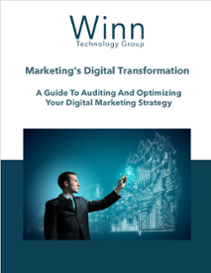 An inbound marketing strategy involves a multitude of components and requires continuous analysis and adjustment as you move through your campaigns. Several traditional outbound methods can complement and enhance the effectiveness of your inbound efforts. Here we take a look at seven ways to improve your inbound marketing strategy.
An inbound marketing strategy involves a multitude of components and requires continuous analysis and adjustment as you move through your campaigns. Several traditional outbound methods can complement and enhance the effectiveness of your inbound efforts. Here we take a look at seven ways to improve your inbound marketing strategy.
Use Google Ads To Drive Traffic
Early on in your inbound plan, it can be difficult to drive enough website traffic to reach your conversion goals. Leveraging Google Ads to promote your blog articles and premium offers can get you at the top of search engine results until your organic rankings are high enough to generate adequate website traffic. Choose your target audience carefully to ensure you’re putting your content in front of the right people.
Run LinkedIn Ad Campaigns
LinkedIn advertising allows for extremely granular targeting and even provides the option of uploading lists of companies and individual prospects. You will generate some leads, but the primary benefits will be increased website traffic, additional company page followers, and higher engagement numbers on sponsored content posts. Each campaign should contain at least four individual ads, and only two of them should lead to gated offers.
Increase Your Visual Content
Visual content such as videos, infographics, and memes can spice up your website and tend to be shared much more frequently on social media platforms. Social media plays a key role in building brand awareness, driving website traffic, and generating leads. The more people engage with your content, the farther it will reach. Demo videos and detailed infographics allow you to communicate complex ideas and show just how your products work.
Host A Webinar
Online events have taken off over the last two years, and that trend is still going strong. Webinars can be an effective way of both demonstrating your product and humanizing your brand. These events should be planned and promoted at least four weeks out to ensure adequate attendance. Find ways to make your presentations entertaining and engaging by using humor and involving the audience in Q&A sessions.
Publish More Blog Articles
Increasing the amount of content you publish is the most effective way of improving your inbound efforts, and that typically starts with upping the number of blogs you post each month. Each article creates a new indexed page for your website, which helps with SEO and gives you more fuel for your social media accounts. The ideal posting frequency is between 12 and 16 articles per month. Quality is just as important as quantity, don’t post just for the sake of posting.
Create More Premium Content
Premium content is typically gated by a form that allows you to capture contact information and business intelligence. These offers can consist of eBooks, whitepapers, case studies, webinars, templates, and demo videos. You’ll want to create a resources page to house all of your premium assets, as this can help with SEO and serve as a valuable sales and marketing tool. Ideally, you’ll want to create at least one new premium piece each quarter.
Use Experiential CTAs
Experiential calls to action that offer your visitors the option to book a demo, receive a free trial or consultation, and even watch a video can be even more valuable and enticing to prospects. These CTAs are typically clicked on by people closer to the bottom of the funnel and indicate a genuine interest in your product. Many prospects are not going to want to read a whitepaper or eBook to learn about your products, and these types of offers cater to that crowd.
Inbound marketing is composed mainly of digital tactics. Periodically auditing and adjusting your approach is essential to sustain growth. Click below to download our free guide: Marketing’s Digital Transformation – A Guide To Auditing And Optimizing Your Digital Marketing Strategy.





